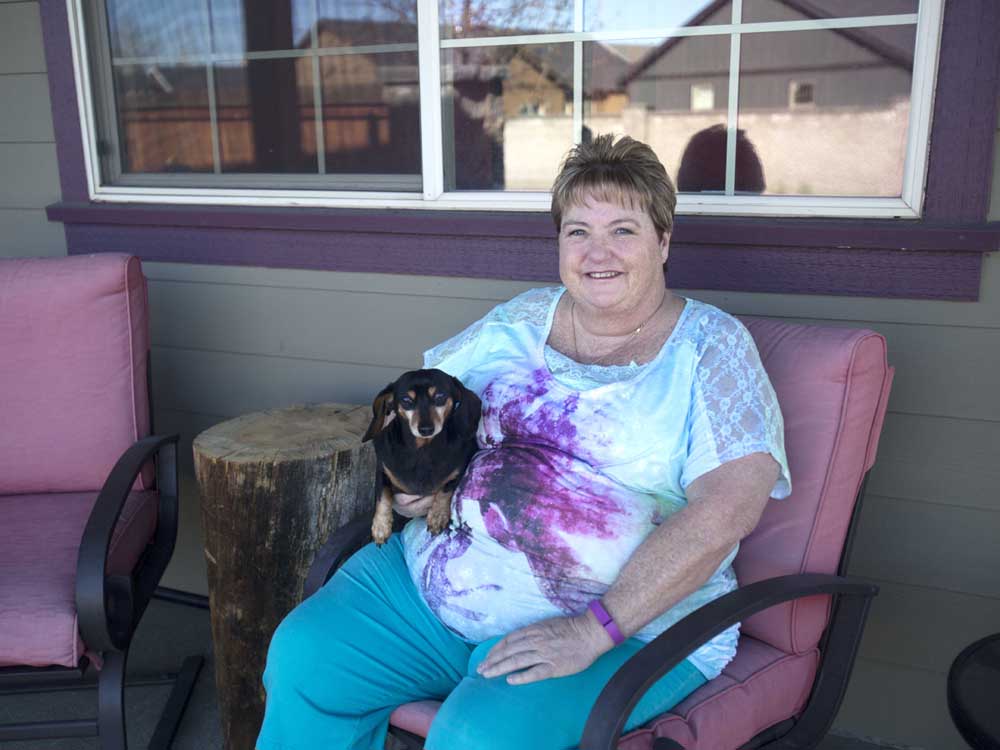Clock is running on underwater refinancing
Published 1:04 am Tuesday, March 31, 2015

- Meg Roussos / The BulletinAfter refinancing through LRAPP, Maggie Law has been able to stay in her home.
Mary Law fell behind in her mortgage payments after she and her husband of nearly 17 years divorced in 2012.
The home on a corner lot with mountain views that they shared for almost 10 years was headed for foreclosure and an eventual short sale. She and her ex-husband had bought the four-bedroom place in northeast Bend for almost $315,000. The monthly payment came close to $1,900, more than she could handle alone on what she makes as a customer service representative for BendBroadband.
Trending
“I was kind of depressed because I love my house,” said Law, 58.
She hoped she could sell the place for more than she owed, but real estate prices were only just recovering from the Great Recession and her real estate broker listed the property for a short sale in early 2013 . “A $220,000 listing just killed me,” Law said. “But, financially, I wasn’t in a position. … I knew something had to happen fast.”
Then she opened a piece of mail from another broker soliciting her interest in the Loan Refinancing Assistance Pilot Project. LRAPP, a self-supporting program funded by the federal government through the state of Oregon, is designed to help distressed homeowners stay in their homes by reducing the amount they owe on their mortgages. Only homeowners in five Oregon counties — including Deschutes, Crook and Jefferson — are eligible; since 2010 it’s refinanced 167 mortgages, half of them in Deschutes County.
Despite the resurgence in the Central Oregon housing market, the program still exists, and, its founder said, is still serving clients. Erik Sten, a former Portland city commissioner and now a resident of Bend, designed the program and administers it under contract through his firm, Further Development LLC . However, the program is set to end by 2017, when funding authority expires and the money goes back to the U.S. Treasury.
In Deschutes County at the end of 2014, 11 percent of homes were underwater, or worth less than their owners owed on their mortgages, according to a March 19 report by Zillow . Nationwide, 17 percent of homes are underwater, the majority at the lower end of the price range. Those homes “are far more likely to be worth less than the balance of their mortgage and they are far more likely to be further underwater than their high-end counterparts,” according to the report.
In Crook County, 15 percent of homes were valued less than their owners borrowed to buy them, in Jefferson County 29 percent, according to the same report. Deschutes and Jackson counties were the first included in LRAPP when the state approved the program in 2010; it expanded the program to Crook, Jefferson and Josephine counties in 2013, Sten said. He said hundreds more homeowners have applied than qualified for the program.
Trending
“So many are still out there,” he said. “I’m surprised by how much of a need there still is, given the big uptick in the market.”
Sten, as a Portland city commissioner, oversaw affordable housing from 1996 until he resigned midterm in January 2008. He left thinking he’d use his experience to develop moderately priced housing projects as a business, he said. Instead, the nationwide housing market collapsed.
“That was spring of ’08,” he said, laughing. “About six months after we formed the company, it became clear that no housing would be financed anywhere in the country for the next however-many years.”
Rather than putting people in homes, his mission became preserving homeownership for those at risk of losing it. Sten and his now-former business partner, Dave Thurman, conceived of and pitched LRAPP to Oregon Housing and Community Services. LRAPP took $12 million from $220 million allocated to Oregon from the federal Hardest Hit Fund and used it as a revolving loan fund, said Sten, who moved to Bend in 2008. Most of the Hardest Hit money went into mortgage relief programs like the Home Rescue Program that gave qualified homeowners a maximum $20,000 to get current on their mortgages.
LRAPP took a different tack. Sten’s firm uses the money to buy the applicant’s home from the lender in a short sale at a price about 40 percent less than the original loan amount . Then, Sten’s firm immediately sells the house back to the homeowner at a price 12 percent higher, which feeds the loan fund and covers costs, including Further Improvement’s fee. The applicant must qualify for a mortgage just as any other buyer would, with some leeway, he said.
The original lender recoups more of its original loan than it would through foreclosure, Sten said. The state eventually sells the refinanced loan to another private bank. Washington Federal has bought them thus far, Sten said. The homeowner gets a 30-year, fixed-rate mortgage at 6 percent.
In Law’s case, her principal dropped to $250,000 and her mortgage payment by several hundred dollars, and by then family had moved in with her to share the financial burden. Like other homeowners in similar straits, she paid no tax on the debt forgiven in the short sale. Congress, through the Mortgage Forgiveness Debt Relief Act of 2007, removed the tax liability that comes with debt forgiveness on a primary residence for qualified homeowners, according to the IRS. That exemption ended in 2014.
One hitch hampered the program from the outset. The nation’s biggest mortgage lenders would not participate in the program. At first, only smaller banks, subprime lenders and firms like hedge funds that had invested in mortgage loans were willing to refinance loans for distressed owners, Sten said. Unlike banks, which have tighter regulatory and bookkeeping requirements, those smaller lenders were apt to rid themselves of the liability and recoup their investments as best they could, he said.
“And part of why, I think, that the state hasn’t advertised it a whole lot is that for the first couple of years, the banks wouldn’t take part because it’s too innovative for their tastes,” Sten said.
That situation changed last year for a number of reasons, he said. First, Melvin Watt in December 2013 took over the Federal Housing Financing Agency. Watt, unlike his predecessor, was open to allowing homeowners to stay in their homes by reducing the principal amount of their loans by a short sale. That was a major change and one that affected the two biggest mortgage lenders in the U.S., Fannie Mae and Freddie Mac. Both agencies, administered by the FHFA, had standard clauses in sales contracts prohibiting owners from keeping their foreclosed-upon homes, Sten said.
“Now, what’s happened is the national policy has shifted to be more open to that,” he said. “And even though that policy may or may not attach directly to our program, it kind of trickles down.”
The Oregon Legislature in June 2013 outlawed short sales that prohibit the homeowner from retaining ownership. Banks could still refuse to negotiate a deal, but not on that basis.
“The overall market has corrected itself, but what I think is unexpected is that nationally, on average, 17 percent of mortgages are still underwater,” Sten said. “I think the banks are starting to realize that getting those fixed is not gonna happen without some concessions on their part.”
Law tried once before 2013 to qualify for LRAPP, but her mortgage holder, Fannie Mae, would not participate, she said. She moved on toward the short sale and foreclosure until that mail solicitation showed up, she said. The broker handling her sale, Kim Bishop, knew about the LRAPP program; she had applied for it herself four times before she was successful in refinancing her mortgage. But Bishop said she never mentioned the program to Law because she assumed Law was ready to move on and sell the house. In April 2013, Law phoned Sten, who got the paperwork rolling, and Bishop handled the transaction. The deal closed in December that year.
“Erik was my knight in shining armor, and that realtor who sent me a letter,” Law said. “I plan to go out of this house toe first.”
— Reporter: 541-617-7815,
jditzler@bendbulletin.com







